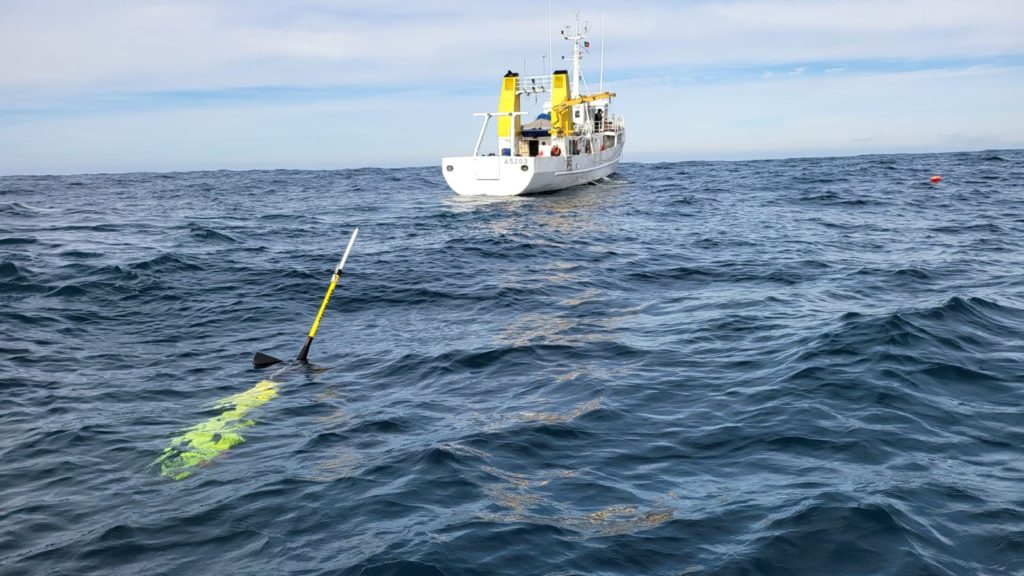Technicians from the Instituto Hidrográfico da Marinha (IH) and PLOCAN deployed a glider from the hydrographic vessel NRP Andrómeda, embarking on a four-week scientific mission under the European project JERICO-S3. The glider was launched southwest of Sesimbra, Portugal.
The activity, known as CBONDEX-TNA, represents a transnational access (TNA) requested by IH utilising a SeaExplorer glider from PLOCAN’s VIMAS fleet, navigating the waters surrounding the coastal region of Lisbon to address specific scientific and operational challenges posed by the JERICO-S3 project. To accomplish this, the glider unit has been equipped with specialised oceanographic sensors aimed at measuring biogeochemical parameters (temperature, salinity, pressure, dissolved oxygen, chlorophyll, and turbidity) of seawater, from the surface to a maximum depth of 1000 meters.
The JERICO-S3 project, funded by the European Horizon 2020 program, aims for a more integrated approach to science for better observation of the coastal ecosystem, enhancing scientific excellence while considering regional and local ecosystems. It involves the preliminary development of an electronic infrastructure supporting scientists and users by providing access to dedicated services, advancing the design of the European Research Infrastructure (RI) dedicated to coastal observatories, and its strategy for sustainability. To achieve this, JERICO-S3 encompasses significant user-driven improvements in terms of systematic monitoring of the physical and biogeochemical complexity of coastal seas, access to facilities, data, and services, best practices and performance indicators, innovative monitoring strategies, cooperation with other European RIs (EuroARGO, EMSO, AQUACOSM, DANUBIUS, ICOS, EMBRC, LIFEWATCH), and international scientific communities, industry, and other stakeholders, ultimately aligning its strategy with COPERNICUS/CMEMS, EMODNET, and GEO/GEOSS.
Follow the mission in real-time through the glider data portal.

